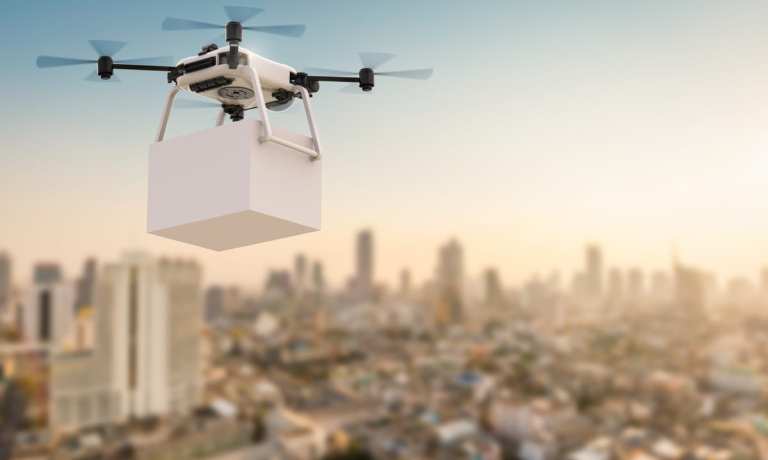
Verizon, Verizon’s Skyward unit and UPS Flight Forward are teaming up to provide drone delivery for retail products using Verizon’s 4G LTE and 5G networks.
The companies began testing the drones last year in Florida using Verizon’s 4G network and now plan to test them on Verizon’s new 5G Ultra Wideband network.
“We will need the ability to manage and support multiple drones, flying simultaneously, dispatched from a centralized location, operating in a secure and safe environment. To do this at scale, alongside Verizon and Skyward, we’ll need the power of 5G,” said UPS CEO Carol B. Tomé.
UPS said it has made more than 3,800 drone delivery flights since it created its drone unit, UPS Flight Forward, in 2019. The service gained further traction during the pandemic by being able to provide rapid and contactless home delivery to older customers who were at high risk of developing severe COVID-19.
“Using Verizon’s 5G and Skyward, we’ll be able to transform the delivery experience — more personal, more on-demand and with the same safety, efficiency, and reliability our customers trust today,” said Bala Ganesh, vice president of UPS’s Advanced Technology Group.
The companies said 5G technology will allow the companies to fly more drones at once.
“The low latency of 5G and edge compute is ideal for monitoring air traffic in and out of a busy logistics hub, especially those using mixed fleets of autonomous vehicles like drones, trucks, and planes,” explained Skyward President Mariah Scott.
Drone delivery has already taken off in other areas of the world, such as Iceland.
Yariv Bash, co-founder and CEO of Flytrex, spoke with PYMNTS CEO Karen Webster last summer about the coming day of the drones, as an Federal Aviation Administration (FAA) framework and pilot programs yield results. Flytrex started delivery by drone in Reykjavik in 2017.
“Less than a year after, we realized that home delivery is going to be the killer application for drones,” Bash told Webster.
Meanwhile, despite the telecom industry’s excitement over 5G service, adoption has been relatively slow, particularly in the U.S.
While the four major cell phone service companies are still racing to make 5G available to more users in more cities, only about 12 percent of global smartphone device shipments enable access to the latest tech, and most of that total is in China.
As for the situation on the ground, there’s still a wide gap between locations that have some degree of access to 5G and actual usage of 5G by consumers — but Verizon is undeterred, and already moving on to the next big thing: “5G Ultra.”
“We’re not slowing down,” said Kyle Malady, Verizon’s chief technology officer on Monday. “We’re rolling out new services to more customers continuing the digital transformation Verizon has been driving.”
In a statement coinciding with its participation in the virtual version of this year’s Consumer Electronics Show (CES), Verizon said it ended 2020 with regular 5G available in 2,700 cities serving 230 million people. At the same time, 61 cities had Ultra service available, and another 12 cities were offering 5G home service.